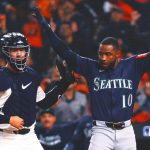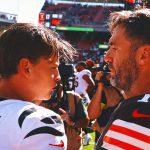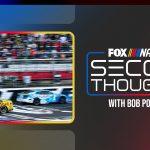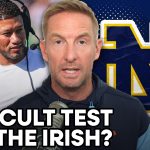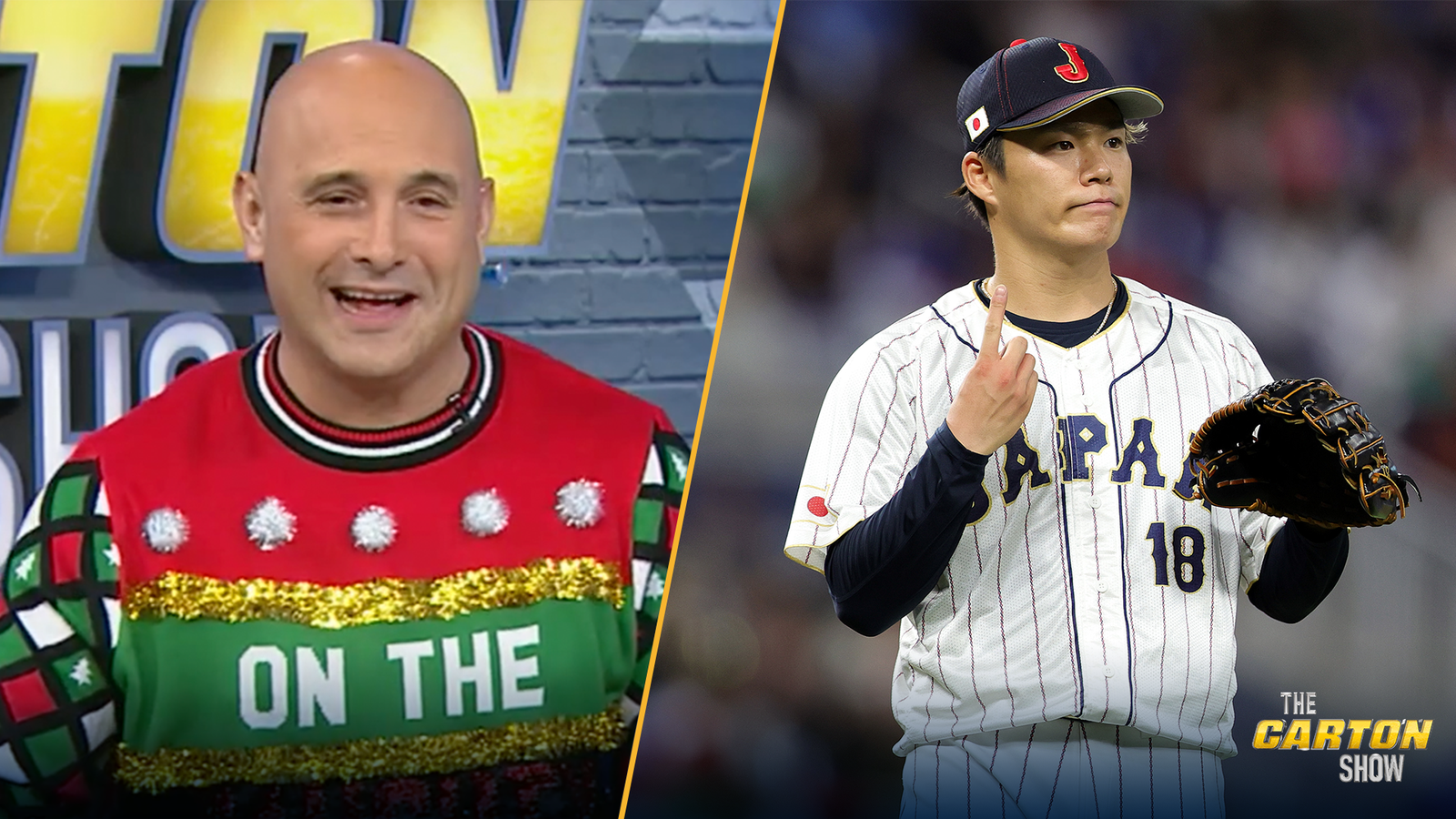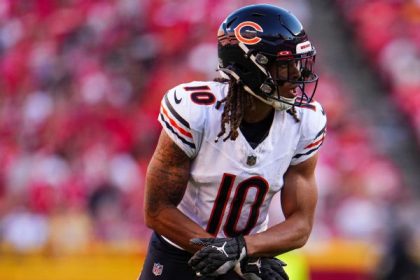“One of our goals is for baseball fans in Japan to convert to Dodger blue,” president of baseball operations Andrew Friedman said as part of his introductory remarks at the recent press conference welcoming Shohei Ohtani to the organization. As if signing a singular sensation like Ohtani wasn’t enough of a dramatic step towards that organizational ambition, the Dodgers have delivered one hell of an encore: signing right-hander Yoshinobu Yamamoto, arguably the most dominant starting pitcher in NPB history.
Yamamoto’s 12-year, $325 million deal with the Dodgers edges out Gerrit Cole’s nine-year, $324 million pact with the Yankees following the 2019 season as the largest ever given to a pitcher, and represents the latest stunning chapter in an offseason of spending for Los Angeles.
But unlike the Dodgers’ pursuit of Ohtani, in which they were heavily favored to sign the two-way superstar all along, securing Yamamoto seemed like far less of a certainty at the outset of the off-season. If anything, it seemed for a while like an alternative path for the Dodgers in the unlikely scenario that Ohtani opted elsewhere.
Meanwhile, both the Yankees and Mets — as well as several other big-market teams looking to throw some serious cash around like Boston, San Francisco, and Philadelphia — expressed extreme interest publicly and privately in Yamamoto in the weeks since he was officially posted by the Orix Buffaloes in November. The New York teams in particular appeared to be prioritizing Yamamoto from the get-go in a way the Dodgers simply couldn’t while they remained laser-focused on reeling in Ohtani. And with so much focus on whether the Dodgers would ultimately land Ohtani, little attention was paid to what could potentially come next for them.
ADVERTISEMENT
But once we learned the details of Ohtani’s contract involving unprecedented deferrals — installed at Ohtani’s request in an effort to maximize the team’s ability to build around him — the possibilities for something much bigger started to crystalize. The acquisition and extension of right-hander Tyler Glasnow was a bold first step. But the longer Yamamoto loomed on the open market, LA’s viability as a landing spot for the prized Japanese ace rapidly increased.
It wasn’t simply the financial flexibility afforded by Ohtani’s unique contract to prepare a competitive offer for Yamamoto; Ohtani’s presence on the roster, alongside fellow former MVPs Mookie Betts and Freddie Freeman, suddenly made the Dodgers all the more attractive as the ideal environment for him to make his transition to a new league in a new country.
Nine months ago, Ohtani and Yamamoto celebrated a dramatic victory over Team USA to win the World Baseball Classic. By joining his Samurai Japan teammate in LA, Yamamoto will have every opportunity to chase another trophy together. And while there have been several cases of Japanese players sharing MLB clubhouses over the years, none have possessed nearly as much combined star power as this new Dodgers duo. For an organization that brought us the debut of Hideo Nomo, sparking decades of superstars jumping from NPB to MLB, it is a wholly appropriate place for such high-end Japanese talent to join forces and pursue greatness in MLB together.
Both Ohtani and Yamamoto won Japan Series titles during their time in NPB, with Yamamoto appearing in the most recent three editions of the NPB championship series. Ohtani, meanwhile, has yet to even sniff the MLB playoffs. If the last decade of Dodgers baseball tells us anything, that should change next year.
But for all the sentiment across the industry and on social media marveling at the Dodgers’ new superteam, there was also an expected wave of jokes at the Dodgers’ expense. Some version of, “Just watch the Dodgers win 126 games in the regular season only to be eliminated by the 83-win [insert wild-card team]!”
If any team would be haunted by the threat of October entropy, it would be the Dodgers. Having suffered early eliminations in myriad heartbreaking ways year after year with star-studded rosters, the Dodgers could reasonably conclude that stacking All-Stars in an effort to ensure a championship is a fool’s errand in a sport like ours. By some logic — the kind communicated by some organizations as a way of explaining a pursuit of stability and luck rather than an unrelenting push for top-tier excellence – the Dodgers could throw their hands up and say, “let’s just focus on building a sustainable playoff team and then hope for our best come postseason time.”
Instead, the fear of October unknowns has hardly been a deterrent. Having exercised free-agency restraint in recent winters in preparation for this one, this billion-dollar spending spree has reminded us what this organization still prioritizes over all: winning as many baseball games as possible. A fear of losing in unpredictable fashion in the postseason should not preclude a commitment to putting the best possible team on the field – and credit to the Dodgers for epitomizing that pursuit no matter how many times they’ve come up short.
As for LA’s next move, that may depend on just how deep ownership’s pockets truly go. It’s clear the flexibility afforded by the massive deferrals in Ohtani’s contract have been put to use already via Glasnow and Yamamoto. And yes, they have already accounted for over half of all spending in free agency this winter, a true financial flex unlike anything we’ve ever seen. But as far as 2024 payroll is concerned, Yamamoto’s addition brings them to a projected $285 million according to FanGraphs. That’s far beyond the first competitive balance tax line of $237 million but still below the most stringent demarcation of $297 million and also, remarkably, it’s also only a hair ahead of where the Mets ($284 million) and Yankees ($279 million) payrolls currently stand.
In that sense, it remains to be seen if Los Angeles is willing to push far beyond their peers to the degree the Mets did a year ago, or they have arrived at something of a payroll ceiling and will focus more on minor upgrades from here on out.
If the latter is true, no one would complain — to call this winter a smashing success for the Dodgers would be an understatement. Should they push forward in a more aggressive manner, however, Friedman and Co. have a few avenues they can explore. While the pitching staff sure looks a whole lot stronger than it did when the season ended, there’s still a whole lot of starting pitching still available via trade and free agency that could represent an upgrade over the current crop of pitchers slated to duke it out for the fifth starter spot come spring training.
And though there’s less impact talent available externally on the position player side, corner outfield (Chris Taylor, Jason Heyward) and shortstop (Gavin Lux) are parts of the current lineup that may not strike as much fear into opponents as you might expect from a purported superteam.
Yet as jaw-dropping as the current collection of talent is, heavy competition remains across the league with their own breathtaking groups of star players — albeit not as shiny and new as this Dodgers roster. And baseball’s volatility reduces the impact of any single move. The Dodgers’ 2024 World Series did shift after this monumental signing — but only from +460 to +380+. No MLB team, no matter the resources spent on it, will be a championship favorite the likes of what we see in the NBA or occasionally the NFL.
What’s become clear after these winter additions is that when pitchers and catchers report to Camelback Ranch in February, the Dodgers will be the center of attention. They are no stranger to entering a season with a target on their back, but their historic hot-stove expenditures have expanded that target tenfold.
But this is baseball, and nothing is guaranteed. The Dodgers know that as well as anyone.
For now, all we can do is marvel at what they have amassed, and wonder eagerly what comes next.
Jordan Shusterman is half of @CespedesBBQ and a baseball writer for FOX Sports. He has covered baseball for his entire adult life, most notably for MLB.com, DAZN and The Ringer. He’s a Mariners fan living in the Eastern Time Zone, which means he loves a good 10 p.m. first pitch. You can follow him on Twitter @j_shusterman_.
MLB trending
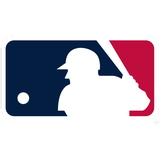
Get more from Major League Baseball Follow your favorites to get information about games, news and more

